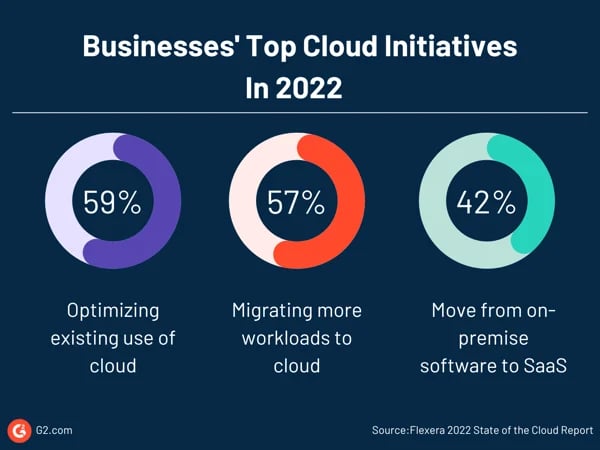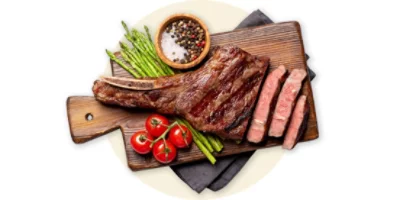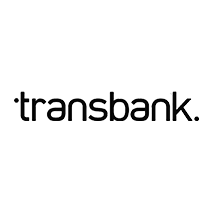Business Agility
Buy One - Get Agility
No Limit Per Customer
9 Varieties Available
Price: Priceless
Shop Agility
In the ever-changing grocery realm, development teams confront a unique task: realizing business goals with leaner squads and tighter budgets. Navigating this challenge necessitates a fine balance between efficiency and impactful outcomes. Agile methodologies and business agility emerge as guiding stars, enabling retailers to achieve more with less while facilitating store and department expansions with frugal precision. This strategic shift towards streamlining is propelling automation and machine learning into the limelight, driving ROI while safeguarding innovation.
Adopting Agile methodologies and nurturing business agility emerges as a crucial tactic. With the grocery landscape in constant flux, the agility to navigate market shifts becomes essential. Agile practices empower teams to streamline workflows, expedite time-to-market, and promptly address customer demands. Embracing flexibility and iterative processes, grocery businesses can adeptly prioritize tasks, allocate resources, and provide value-driven solutions that drive higher ROI.
Image source: LinkedIn
Executing a successful Agile transformation necessitates an Agile Transformation Framework. This framework acts as a guiding force, aiding your grocery business in transitioning its mindset and culture toward enhanced agility. By embracing this approach, organizations can accomplish more with fewer resources, optimizing processes and strategies in the following ways:
Image source: McKinsey
Curious about how your organization fares in terms of business agility? Take our Business Agility Assessment today and chart your path toward unparalleled efficiency and success.
Embracing the potential of AI and ML is a game-changer in modern grocery operations. Progressive grocers are harnessing these technologies to reshape workflows, amplify productivity, and elevate operational efficiency.
Image source: Statista
Machine learning in the grocery sector operates through self-enhancing algorithms designed to dissect data, uncover patterns, and unveil insights into how these connections shape industry trends or business choices.
Notable instances of AI and ML in action among prominent grocery players:
As artificial intelligence and machine learning unveil insights and trends, real-time access to the captured data becomes vital for data-driven decisions in the dynamic world of grocery.
In the constantly evolving landscape of the grocery industry, the significance of data quality cannot be emphasized enough. It's not just about having data; it's about having precisely the right data when it's needed most for well-informed decision-making. Thriving in this environment requires organizations to possess a comprehensive grasp of what's effective and what isn't, and the agility to swiftly identify opportunities. A pivotal aspect of this journey involves seamlessly aggregating data across various initiatives and swiftly accessing real-time insights. In this era driven by data, the capacity to harness superior data directly influences a business's agility and competitive edge.
A tangible instance of the significance of data aggregation arises in scenarios like product recalls. The ability to receive real-time recall alerts, whether in-store or through the app, showcases how robust data aggregation ensures immediate responsiveness and customer safety.
The goal of expanding while concurrently trimming operational costs is a delicate balance that grocery retailers are striving to achieve. To navigate this challenge, optimizing core functions like purchasing, supply chain management, delivery, and fulfillment processes becomes pivotal in cost reduction. Leveraging cutting-edge technologies such as AI-driven demand forecasting, inventory optimization tools, and route optimization algorithms can transform these processes, minimizing waste, enhancing efficiency, and ultimately reducing costs. By harnessing these technological advancements, grocery retailers can confidently embark on expansion initiatives without compromising their bottom line.
An example of new innovative technology that can help optimize grocery retail initiatives is Daisy Intelligence. Daisy is an AI-powered application that provides weekly promotional recommendations on a variety of channels, as well as suggested inventory assortment and inventory forecasting.
Image source: Fermentation Association
Diversifying and expanding the international foods sections within grocery stores holds the promise of a richer and more fulfilling customer experience. By broadening the selection to include an array of global flavors and culinary traditions, grocery retailers can tap into the increasingly diverse and adventurous preferences of their customers. This strategic move not only caters to the multicultural palate of modern consumers but also fosters a sense of inclusivity and cultural exploration. A well-curated international foods section not only offers a delightful shopping experience but also serves as a gateway to discovering new cuisines and expanding horizons. It enables grocery retailers to establish a unique identity that resonates with a wide range of tastes, contributing to increased footfall, customer engagement, and loyalty.
Revolutionizing the checkout experience is a prime strategy for grocery retailers aiming to stay at the forefront of customer convenience. Enhancing both mobile and self-checkout capabilities offers a streamlined shopping journey that resonates with the fast-paced modern lifestyle. Embracing cutting-edge technologies like RFID (Radio Frequency Identification) tags, NFC (Near Field Communication), and mobile apps equipped with intuitive interfaces can facilitate swift and hassle-free transactions.
Image source: Walmart
Walmart's "Scan and Go" feature within their Walmart+ subscription app serves as a standout illustration. This innovation empowers customers to seamlessly scan items and finalize payments using their smartphones. Shoppers can effortlessly scan product barcodes during their shopping journey and utilize their smartphone's camera to process self-checkout by scanning QR codes, ensuring a touchless and convenient checkout experience.
With consumers increasingly valuing speed and ease in their shopping interactions, efficient checkout solutions play a pivotal role in creating a positive brand image and customer loyalty. Grocery retailers that prioritize improving mobile checkout and self-checkout options are poised not only to cater to evolving consumer preferences but also to elevate their overall customer experience, resulting in increased satisfaction and repeat business.
Diversifying and expanding grocery retail operations by venturing into banking and pharmacy divisions can be a strategic move for industry leaders. By offering integrated financial services and pharmacy solutions, grocery retailers can tap into additional revenue streams while simultaneously enhancing customer experience and loyalty.
Incorporating technologies like seamless online prescription ordering, AI-driven personalized health recommendations, and advanced point-of-sale systems can optimize operational efficiency and ensure a seamless customer journey.
“Supermarkets with in-store pharmacies score higher in overall customer satisfaction”
Furthermore, introducing branded credit cards can stimulate customer engagement and provide tailored rewards, encouraging repeat business and solidifying brand loyalty. This expansion not only positions grocery retailers as comprehensive solutions providers but also amplifies their market presence and competitiveness in the industry.
As technology continues to redefine the retail landscape, catering to diverse payment preferences not only boosts customer satisfaction but also positions grocery leaders at the forefront of the industry's evolution.
By integrating innovative technologies like blockchain, grocery retailers can attract younger audiences and enhance payment security simultaneously.
Image source: Klarna
Offering flexible payment options and plans at checkout, similar to platforms like Klarna, empowers shoppers with greater financial freedom and convenience.
This strategic expansion beyond traditional payment methods leverages the power of digital advancements, streamlining transactions and improving the overall shopping experience.
A pivotal element in a successful transformation strategy involves translating these concepts into reality by leveraging technology. A strong concept lacking effective implementation will ultimately yield limited results.
A pivotal element in a successful transformation strategy involves translating these concepts into reality by leveraging a technology solutions partner. A strong concept lacking effective implementation will ultimately yield limited results. Large enterprises (revenues over $1 billion) are increasingly outsourcing their digital initiatives, improving efficiency and internal resource utilization.
The combination of a smarter supply chain and an improved customer experience positions grocery leaders to thrive in a dynamic and competitive market landscape.
Grocery leaders can strategically introduce bulk offerings for select items, following the successful models of industry giants like Costco and Sam's Club. By implementing bulk purchase options, grocery retailers can enhance their supply chain efficiency through optimized inventory management and reduced packaging waste. Moreover, this approach can bolster customer loyalty by providing cost-effective choices, catering to the preferences of budget-conscious shoppers, and promoting sustainable shopping practices.
Embracing blockchain technology within your supply chain not only revolutionizes efficiency and scalability but also positions retailers to compete effectively with other grocery retailers, and even against grocery giants like Amazon. This innovation fosters transparency, offering stakeholders real-time insights into the entire supply chain journey, fostering accountability, and ensuring ethical operations.
A Neilsen report highlights that 77% of consumers would discontinue their brand purchases if they perceive the brand to be engaged in greenwashing. This statistic underscores the paramount significance of supply chain transparency.
Blockchain technology significantly enhances supply chain efficiency by creating a secure and transparent network for real-time data sharing among stakeholders. Its decentralized nature eliminates intermediaries and channel silos reducing delays and lowering operational costs and improving order tracking. This streamlining of processes ensures faster and more accurate transactions, boosting overall supply chain efficiency.
Autonomous vehicles are poised to revolutionize supply chain logistics by offering efficient and precise transportation. The integration of blockchain technology can further elevate this transformation. By using blockchain, the entire journey of goods transported by autonomous vehicles can be securely tracked, verified, and audited in real-time, ensuring transparency, accountability, and the safeguarding of goods throughout the supply chain journey.
Blockchain technology bolsters supply chain security by providing an unalterable record of product origins, manufacturing processes, and distribution. This transparency minimizes the risk of counterfeit goods infiltrating the market. Additionally, blockchain's encrypted and decentralized structure enhances data protection, safeguarding sensitive information and ensuring the authenticity of products throughout the supply chain.
Image source: Statista
Blockchain technology has the potential to revolutionize retail supply chains by providing scalability and facilitating globalization. Through its decentralized structure, blockchain enables seamless integration of new participants and transactions without compromising system performance. This agility fosters global expansion, allowing retailers to efficiently manage and monitor supply chain operations across diverse regions, ensuring consistency and efficiency on a global scale.
Leveraging a fast code approach to digital reinvention within the grocery supply chain can be empowered through the integration of blockchain technology. Embracing the decentralized and transparent essence of blockchain, the grocery supply chain gains momentum in digital reinvention. This infusion of Agile blockchain integration fuels rapid transformation, propelling grocery leaders to swiftly adapt, optimize operations, and thrive in the ever-changing grocery retail landscape.
Image source: Computerworld
Leveraging blockchain technology within supply chains facilitates the seamless synchronization of orders across multiple platforms via API-based integrations. Through the implementation of a decentralized ledger, grocery retailers can achieve real-time updates and maintain uniform order information across diverse interfaces. This approach can also extend to the intelligent tracking of inventory spanning various platforms. The result is the elimination of discrepancies, heightened operational efficiency, and the cultivation of a unified supply chain ecosystem. This, in turn, guarantees accurate expected delivery dates and elevates the overall customer experience.
The seamless integration of digital and physical realms is gaining heightened significance in the retail landscape. Customers now anticipate a cohesive experience that seamlessly guides them through both online and in-store interactions.
“With 60% of digital orders influenced by the store, your in-store digital experience has never been more important.”
-Salesforce
Envision a scenario where your customers initiate a transaction through your app and can seamlessly finish the transaction in-store as well as reserve the item for later curbside pickup.
The convenience of streamlined in-store pick-up or drive-through services, as well as enticing rewards programs, are redefining the customer journey, ensuring a true omnichannel experience, and enhancing overall satisfaction and engagement.
“To win the loyalty of their consumers means optimizing the basics free-returns, priority pick-ups, seamless customer experiences, etc. In the end, the retailers that foster loyalty will be the ones who offer better personalization, transparent communication, and a digital experience that goes above and beyond.”
- Buyvoets in Retail Dive
This seamless integration empowers customers to effortlessly access pricing promotions and discounts across various channels, including mobile apps and QR codes. Within brick-and-mortar stores, mobile apps offer a distinctive platform for personalized engagement, delivering customized recommendations and exclusive deals. These apps also equip retailers with the ability to gain valuable insights into customer preferences and behaviors, fostering opportunities for targeted marketing strategies in the future.
Enhancing connectivity with grocery delivery and pickup sites is a pivotal step in creating a more integrated and efficient shopping experience. By implementing technologies that seamlessly link these platforms, grocery leaders can ensure flexible order management, obtain real-time order updates, accurate delivery times, and effortless delivery and pickup options for customers.
Image source: Walmart
Simultaneously, optimizing the customer returns experience is crucial in building trust and loyalty. Utilizing technologies like AI-powered chatbots and mobile apps, grocery retailers can simplify the returns process, providing real-time assistance and instant refunds. These improvements not only streamline operations but also bolster customer satisfaction, fostering better in-store and digital experiences that align with the modern shopper's expectations.
Grocery leaders can take steps to elevate the customer journey even further utilizing headless commerce and AI. Harnessing Chat GPT technology to provide personalized services, grocery retailers can seamlessly enhance app utilization, and UX, and improve self-service convenience.
Utilizing headless commerce, retailers can enable faster innovation while easily scaling application features. Whether in-store or out, the app becomes a reliable companion, offering quick price checks, access to discounts, and mobile POS/checkout. For an even more personalized self-service touch, grocery retailers can even provide customers with the option to use chat GPT and ML-powered chatbots for in-store guidance and answers.
The Co-op is an example of a grocery retailer that utilizes headless commerce to optimize customer experiences by offering 2 hour delivery.
Leveraging the information collected from app interactions and AI/ML analysis, retailers can effectively employ text-based marketing, promotions, and incentives to draw customers back to the app. This represents the evolution of retail, where personalized support is seamlessly integrated at every stage of the journey.
Enabling associates with intuitive digital tools to seamlessly access data is crucial for enhancing customer interactions. Through their tablets or mobile devices, associates can easily tap into a CRM platform, accessing detailed customer profiles enriched with invaluable insights. These insights encompass a wide range of data, including previous purchases, preferences, demographics, customer satisfaction scores (CSAT), net promoter scores (NPS), and more. This tech-powered approach empowers associates to offer personalized and knowledgeable support, cultivating meaningful relationships and enhancing the overall customer journey.
Leveraging immersive technologies has emerged as a game-changing strategy to forge strong omnichannel connections and ensure consistent customer experiences. Technology has shaped customer expectations, and the fusion of headless commerce, mobile POS, immersive experiences, AI/ML-driven personalization, and AR/VR innovations mark the path toward a future where customers don't just shop – they immerse themselves in a world of products, stories, and possibilities.
Image source: Upload VR
“With 60% of digital orders influenced by the store, your in-store digital experience has never been more important.”
-Salesforce
Grocery retailers today have a unique opportunity to bridge the gap between online and in-store experiences by seamlessly integrating their digital platforms with physical shopping environments.
Harnessing customer data gathered from online interactions, retailers can offer individualized suggestions, pairing ideas, and even match coupons when shoppers enter the store. Pushing the envelope of personalization, grocery retailers can enhance this experience by seamlessly integrating generative AI and chat GPT tools, fostering in-store self-service that delivers custom recommendations, aisle navigation assistance, and convenient mobile self-checkout options. Fostering a customer experience first strategy, grocery retailers can create a one-stop-shop experience that provides customers with everything they need in a personalized and convenient shopping experience.
This innovative approach sets grocery retailers apart by anticipating and fulfilling customer needs, positioning them one step ahead in the fiercely competitive grocery market.
Image source: Giant
Retailers can elevate customer engagement by embracing personalized experiences, a cornerstone of modern retail strategy. By tailoring interactions to individual preferences and needs, retailers can forge stronger connections, fostering loyalty and brand advocacy.

Image source: Natural Grocers
An example of this trend is Natural Grocers, which now provides personalized in-store services through its team of nutritional health coaches. Shoppers can obtain a complimentary 30-minute session with a coach who offers customized product recommendations, advises on eco-friendly household items, and provides insights into food and supplement choices for pets.
Grocery stores can elevate customer satisfaction by implementing "Buy Again" recommendations and personalized coupons tailored to customers' frequent purchases. Leveraging advanced AI algorithms, retailers can analyze shoppers' buying patterns and preferences to suggest relevant products and offer personalized deals. This seamless integration of technology not only enhances convenience but also fosters customer loyalty, creating a more engaging and satisfying shopping experience.
Revolutionize your customer’s shopping journey with smart shopping carts equipped with innovative cameras. These high-tech carts not only track your items but also use advanced algorithms to offer personalized recommendations based on your preferences and purchase history. Seamlessly integrated touch screens allow you to review your cart, receive real-time offers, and even complete your purchase without the need for traditional checkout lines. This futuristic shopping experience is made possible through a blend of computer vision, AI, and user-friendly interfaces.
Image source: Amazon
One such example of this intuitive shopping cart is Amazon’s Dash Cart.
“The cart processes your order at the end of the trip only because you’ve first signed in to your Amazon account on your phone and scanned it at the beginning of the grocery trip.
The cart also has a coupon scanner built-in and supports Amazon’s Alexa shopping lists feature. When you finish shopping, Amazon says dedicated Dash Cart lanes let you just exit the store without dealing with payments or waiting in a checkout line.”
- The Verge
Revolutionizing the checkout experience, grocery retailers can delve into the realm of 'just walk out' technology, inspired by the likes of Amazon's NPC. By implementing computer vision, sensor fusion, and deep machine learning, customers can simply grab what they need and walk out.
This futuristic approach not only enhances convenience and efficiency but also provides a remarkable and memorable customer experience that sets retailers apart in the competitive grocery landscape.
By employing digital price tags that enable real-time price adjustments on each shelf, you can ensure accurate pricing and swiftly respond to market fluctuations. Enhance customer savings by displaying digital coupons directly on the shelf, enticing shoppers to make more informed purchasing decisions.
Image source: QR Tiger
The integration of QR code technology takes transparency to new heights, allowing customers to scan codes to learn about products' origins and details, which is particularly vital in departments like produce and meat. These advancements empower customers with information and facilitate an engaging and informed shopping experience.
Improve in-store customer experiences with the art of video storytelling. Engaging videos unravel product transparency and production journeys, building trust and engagement. Employ interactive screens, augmented reality displays, and QR codes to seamlessly integrate these videos, creating an interactive and informative touchpoint that resonates with contemporary shoppers.
Ensuring Connectivity and Accessibility is Essential. The Emphasis on optimization and cloud connectivity remains strong for retailers in 2023 and beyond.
Embracing cloud modernization for infrastructure and transitioning database operations to the cloud heralds a new era of efficiency and agility for businesses. The advantages are multifaceted:
Development teams and IT departments are actively engaged in modernization efforts, transitioning to or having already adopted cloud solutions. However, the challenge of ensuring seamless connectivity and infrastructure modernization persists. Lengthy project timelines are resulting in financial losses for grocery retailers.
While numerous companies have migrated to the cloud through a 'lift and shift' approach, challenges persist in terms of testing, automation, and seamless connectivity. Automation and modernization are often deficient across various tools and platforms for many companies.

Image source: G2
Organizations should place a priority on cloud consulting, pinpoint potential areas for improvement, and allocate resources to successfully conclude these projects and advance to the next phase of their cloud transformation.

Buy One - Get Agility
No Limit Per Customer
9 Varieties Available
Price: Priceless
Shop Agility
Buy One - Get Efficiency
No Limit Per Customer
13 Varieties Available
Price: Priceless
Shop Digital
Buy One - Get Intelligence
No Limit Per Customer
12 Varieties Available
Price: Priceless
Shop Data
Buy One - Get Security
No Limit Per Customer
5 Varieties Available
Price: Priceless
Shop BlockchainOur team has pioneered technology innovation in the retail and grocery sector for over 20 years. As an expert digital commerce consulting partner, we’ve helped the world’s leading grocery brands stay at the forefront of technological innovation, pioneered cutting-edge retail technology, and set the standard for best-in-class customer experiences.


















































Let’s discuss how a partnership with Nisum can scale, expand, and grow your revenue!